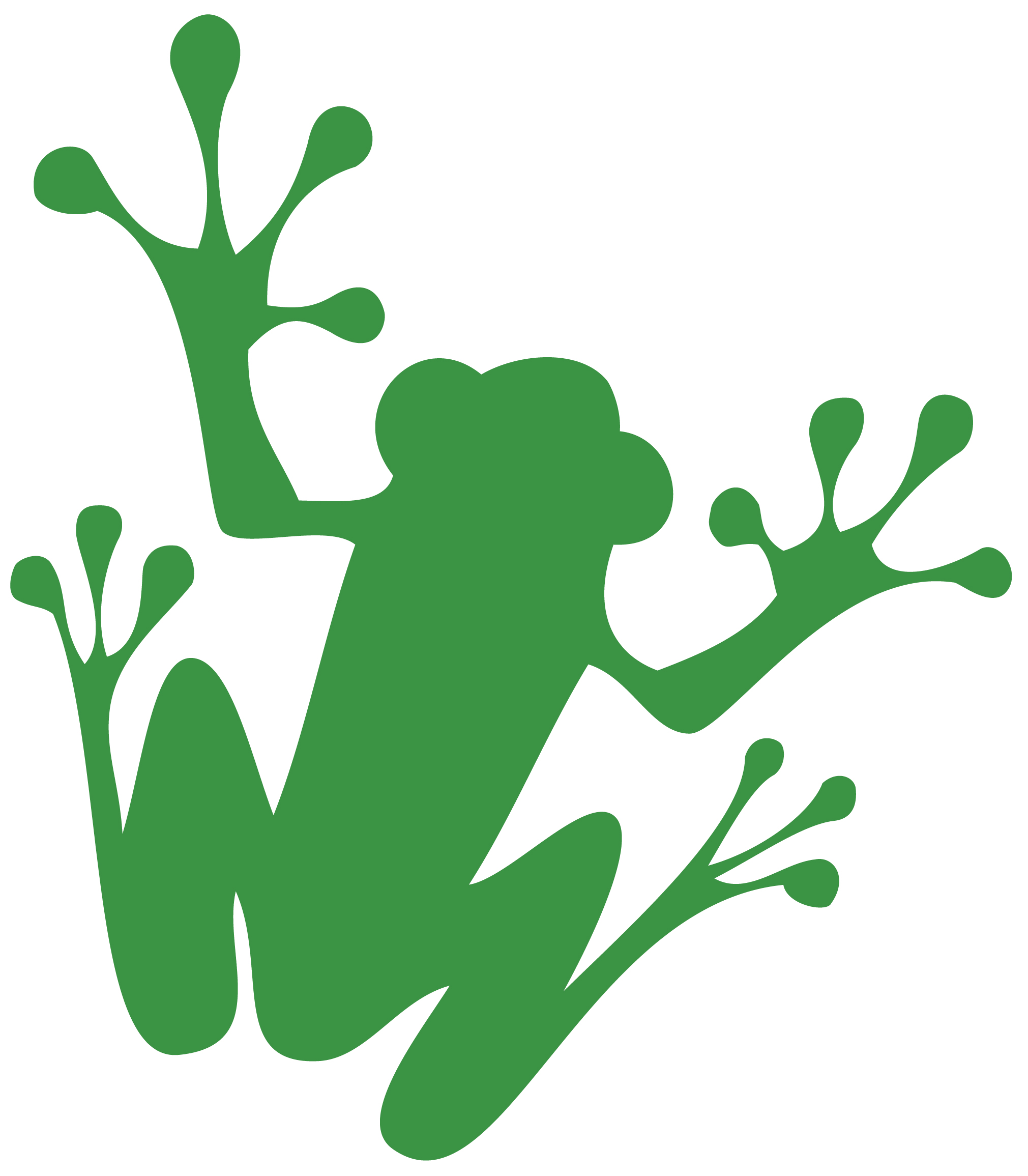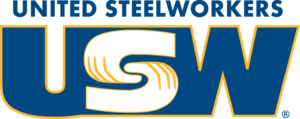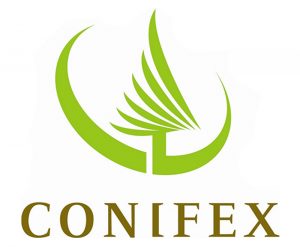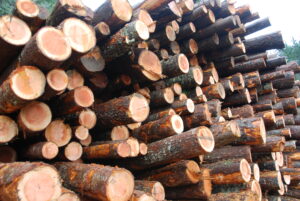 Conifex Timber announced it will temporarily curtail operations at its Mackenzie, BC sawmill. In related news: the United Steelworkers and Unifor welcomed Prime Minister Carney’s forest sector aid; New Brunswick and British Columbia leaders express worry over looming closures; and Nova Scotia’s Northern Pulp bid is defended as supporting forestry. Meanwhile: mass timber makes news in Castlegar and Penticton, BC; Japan’s housing starts turn positive, and Russia’s forestry is contracting.
Conifex Timber announced it will temporarily curtail operations at its Mackenzie, BC sawmill. In related news: the United Steelworkers and Unifor welcomed Prime Minister Carney’s forest sector aid; New Brunswick and British Columbia leaders express worry over looming closures; and Nova Scotia’s Northern Pulp bid is defended as supporting forestry. Meanwhile: mass timber makes news in Castlegar and Penticton, BC; Japan’s housing starts turn positive, and Russia’s forestry is contracting.
In Forestry/Climate news: researchers says Africa’s forests have turned from a carbon sink to a carbon source; more arrests are made at BC’s Walbran valley protest; Arizona loggers want to keep thinning projects funded; Jason Fisher’s latest update on the Forest Enhancement Society of BC; the Wood Pellet Association of Canada’s Arctic Bioenergy Summit; and Tom Radovich is appointed Minnesota Forest Industries’ new CEO.
Finally, how drones are making steep-slope layout and post-fire assessments safer in BC.
Kelly McCloskey, Tree Frog News Editor
 The United Steelworkers union (USW) welcomes the federal government’s new measures to support Canada’s steel and softwood lumber sectors, calling them a meaningful step forward in the face of US tariffs and global market instability. The package includes tighter import controls, a 25% surtax on steel derivatives, strengthened border enforcement, expanded liquidity supports for softwood producers, a top-up to the Work-Sharing program, lower interprovincial freight costs, and new domestic-content requirements for federal projects. …Marty Warren, USW National Director… underscored that the Work-Sharing top-up will help workers stay on the job during temporary downturns and also pointed to the importance of strengthening procurement rules. On softwood lumber, the union welcomes the government’s efforts… “But let’s be honest, forestry towns cannot rebuild on temporary fixes. A long-term resolution to the softwood lumber dispute with the United States is essential. Without it, workers and communities remain vulnerable to decisions they cannot control.”
The United Steelworkers union (USW) welcomes the federal government’s new measures to support Canada’s steel and softwood lumber sectors, calling them a meaningful step forward in the face of US tariffs and global market instability. The package includes tighter import controls, a 25% surtax on steel derivatives, strengthened border enforcement, expanded liquidity supports for softwood producers, a top-up to the Work-Sharing program, lower interprovincial freight costs, and new domestic-content requirements for federal projects. …Marty Warren, USW National Director… underscored that the Work-Sharing top-up will help workers stay on the job during temporary downturns and also pointed to the importance of strengthening procurement rules. On softwood lumber, the union welcomes the government’s efforts… “But let’s be honest, forestry towns cannot rebuild on temporary fixes. A long-term resolution to the softwood lumber dispute with the United States is essential. Without it, workers and communities remain vulnerable to decisions they cannot control.” MACKENZIE, BC — Forestry company Conifex Timber announced that it will temporarily curtail operations at its Mackenzie, BC sawmill for a planned four-week period commencing December 15, 2025. The curtailment is being implemented in response to, among other things, continued weakness in North American lumber markets. The curtailments will begin on December 15, for a planned four-week duration, Conifex said, adding that it is expected to reduce production by roughly 13 million board feet. The North American timber industry has gone through several curtailments in response to US President Trump’s decision to implement tariffs. …The company said it does not anticipate any challenges in securing sawlogs to maintain capacity operations in the future, once market conditions permit a return to full operations. It also expects to see gradual recovery in demand in the second half of 2026.
MACKENZIE, BC — Forestry company Conifex Timber announced that it will temporarily curtail operations at its Mackenzie, BC sawmill for a planned four-week period commencing December 15, 2025. The curtailment is being implemented in response to, among other things, continued weakness in North American lumber markets. The curtailments will begin on December 15, for a planned four-week duration, Conifex said, adding that it is expected to reduce production by roughly 13 million board feet. The North American timber industry has gone through several curtailments in response to US President Trump’s decision to implement tariffs. …The company said it does not anticipate any challenges in securing sawlogs to maintain capacity operations in the future, once market conditions permit a return to full operations. It also expects to see gradual recovery in demand in the second half of 2026.


 MOSCOW — Russia’s forestry sector could face a deep contraction next year as sanctions tighten, interest rates remain high and the ruble stays strong, Deputy Industry and Trade Minister Mikhail Yurin said Thursday. Addressing a Federation Council committee, Yurin said the industry has entered a “downward trend,” with the worst-case scenario pointing to a 20-30% drop in output in 2026. The ministry expects already falling production to continue declining into 2027 if geopolitical conditions worsen, Interfax quoted Yurin as saying. According to the Economic Development Ministry, wood-processing is among the weakest performers in Russia’s industrial landscape. Output fell 4.3% in the third quarter and the slump accelerated to 7.8% in October. …He said Russian timber exports have fallen by more than 20% since before the war, from $12.5 billion in 2021 to to $9.8 billion. Logging volumes are expected to hit a four-year low of 182 million cubic meters this year.
MOSCOW — Russia’s forestry sector could face a deep contraction next year as sanctions tighten, interest rates remain high and the ruble stays strong, Deputy Industry and Trade Minister Mikhail Yurin said Thursday. Addressing a Federation Council committee, Yurin said the industry has entered a “downward trend,” with the worst-case scenario pointing to a 20-30% drop in output in 2026. The ministry expects already falling production to continue declining into 2027 if geopolitical conditions worsen, Interfax quoted Yurin as saying. According to the Economic Development Ministry, wood-processing is among the weakest performers in Russia’s industrial landscape. Output fell 4.3% in the third quarter and the slump accelerated to 7.8% in October. …He said Russian timber exports have fallen by more than 20% since before the war, from $12.5 billion in 2021 to to $9.8 billion. Logging volumes are expected to hit a four-year low of 182 million cubic meters this year. Japan’s housing starts rose 3.2% year-on-year in October 2025, defying market expectations of a 5.2% decline and reversing a 7.3% fall in September. It was the first annual increase since March, driven by rebounds in rented units (4.2% vs -8.2%), built-for-sale homes (14.8% vs -8.3%), and prefabricated housing (9.2% vs -0.4%). However, weakness persisted in owned homes (-8.2% vs -5.6%), while issued units slumped sharply (-36.3% vs 53.7%) and two-by-four homes also turned negative (-3.8% vs 2.1%). [END]
Japan’s housing starts rose 3.2% year-on-year in October 2025, defying market expectations of a 5.2% decline and reversing a 7.3% fall in September. It was the first annual increase since March, driven by rebounds in rented units (4.2% vs -8.2%), built-for-sale homes (14.8% vs -8.3%), and prefabricated housing (9.2% vs -0.4%). However, weakness persisted in owned homes (-8.2% vs -5.6%), while issued units slumped sharply (-36.3% vs 53.7%) and two-by-four homes also turned negative (-3.8% vs 2.1%). [END]
 Modern-day circumstances are slowly transforming the Christmas tree farming industry. …weather is a challenge Michael Cormack faces on the Christmas tree farm he owns and operates in Ontario. … “Mother nature is a big, big factor in the business,” Cormack said. “This year in July, we were averaging over 29 C. So we had trees from two to three years ago that just died. … Four years ago, we had a tornado here that wiped out a bunch of our stuff.” …Another major factor is the cost of living crisis. …“Right now many of the farms are owned by elderly growers, and they’re aging out. So we’re losing a lot of farms year after year, which is unfortunate,” said Kelsey Leonard, founder and director of the Christmas Tree Lab at the University of Waterloo. …U.S. tariffs are also likely to have an impact on the costs associated with growing Christmas trees this year, Leonard said.
Modern-day circumstances are slowly transforming the Christmas tree farming industry. …weather is a challenge Michael Cormack faces on the Christmas tree farm he owns and operates in Ontario. … “Mother nature is a big, big factor in the business,” Cormack said. “This year in July, we were averaging over 29 C. So we had trees from two to three years ago that just died. … Four years ago, we had a tornado here that wiped out a bunch of our stuff.” …Another major factor is the cost of living crisis. …“Right now many of the farms are owned by elderly growers, and they’re aging out. So we’re losing a lot of farms year after year, which is unfortunate,” said Kelsey Leonard, founder and director of the Christmas Tree Lab at the University of Waterloo. …U.S. tariffs are also likely to have an impact on the costs associated with growing Christmas trees this year, Leonard said.
 ARIZONA — For the first time in months, Forest Service timber managers last week attended a Natural Resources Working Group meeting on the continuing effort to restore Northern Arizona forests and protect communities including Payson, Show Low, Pinetop and Pine. Local officials and logging operators said they are still searching for ways to handle millions of tons of low-value brush, slash and small trees that crowd the region’s overgrown ponderosa pine forests. The group, formed through the Eastern Arizona Counties Organization, meets regularly with industry representatives and Forest Service staff. …The Four Forest Restoration Initiative (4FRI) completed about 18,000 acres of thinning in the past year. Mass layoffs and the shutdown limited collaboration and fieldwork. …Pascal Berlioux, executive director of the Eastern Arizona Counties Organization, said a major problem was reduced production at the Lignetics plant in Show Low, which normally buys large amounts of biomass for wood-pellet manufacturing.
ARIZONA — For the first time in months, Forest Service timber managers last week attended a Natural Resources Working Group meeting on the continuing effort to restore Northern Arizona forests and protect communities including Payson, Show Low, Pinetop and Pine. Local officials and logging operators said they are still searching for ways to handle millions of tons of low-value brush, slash and small trees that crowd the region’s overgrown ponderosa pine forests. The group, formed through the Eastern Arizona Counties Organization, meets regularly with industry representatives and Forest Service staff. …The Four Forest Restoration Initiative (4FRI) completed about 18,000 acres of thinning in the past year. Mass layoffs and the shutdown limited collaboration and fieldwork. …Pascal Berlioux, executive director of the Eastern Arizona Counties Organization, said a major problem was reduced production at the Lignetics plant in Show Low, which normally buys large amounts of biomass for wood-pellet manufacturing. Yellowknife, Northwest Territories, will host a premier in-person event for Canada’s bioenergy sector from January 26 to 28, 2026—the
Yellowknife, Northwest Territories, will host a premier in-person event for Canada’s bioenergy sector from January 26 to 28, 2026—the  Africa’s forests have turned from a carbon sink into a carbon source, according to research that underscores the need for urgent action to save the world’s great natural climate stabilisers. The alarming shift, which has happened since 2010, means all of the planet’s three main rainforest regions – the South American Amazon, south-east Asia and Africa – are now part of the problem. Human activity is the primary cause of the problem. Farmers are clearing more land for food production. Infrastructure projects and mining are exacerbating the loss of vegetation and global heating – caused by the burning of gas, oil and coal – thereby degrading the resilience of ecosystems. …The worst affected were the tropical moist broadleaf forests in Democratic Republic of Congo, Madagascar and parts of west Africa. The study,
Africa’s forests have turned from a carbon sink into a carbon source, according to research that underscores the need for urgent action to save the world’s great natural climate stabilisers. The alarming shift, which has happened since 2010, means all of the planet’s three main rainforest regions – the South American Amazon, south-east Asia and Africa – are now part of the problem. Human activity is the primary cause of the problem. Farmers are clearing more land for food production. Infrastructure projects and mining are exacerbating the loss of vegetation and global heating – caused by the burning of gas, oil and coal – thereby degrading the resilience of ecosystems. …The worst affected were the tropical moist broadleaf forests in Democratic Republic of Congo, Madagascar and parts of west Africa. The study,  BRUSSELS — The European Commission has unveiled a new plan to end the dominance of planet-heating fossil fuels in Europe’s economy — and replace them with trees. The
BRUSSELS — The European Commission has unveiled a new plan to end the dominance of planet-heating fossil fuels in Europe’s economy — and replace them with trees. The  The December issue of Forest Safety News is here, bringing timely insights and practical tools for safer forestry work this winter. One standout feature explores how RPAS drones are transforming field safety, reducing worker exposure during steep-slope layout, post-fire assessments, and difficult terrain navigation. It’s a look at technology that’s not just impressive — it’s making real crews safer in real time. This issue also recaps the 18th Annual Vancouver Island Safety Conference, where powerful keynote speakers shared stories of perseverance, leadership, and the importance of mental and physical well-being. The message was clear: safety culture is built person by person, conversation by conversation. You’ll also find a useful update on winter driving and hauling preparedness, including tips for planning routes, managing changing conditions, and supporting drivers during the toughest season of the year. Packed with practical advice, inspiring stories, and forward-looking innovations, this issue offers a strong finish to 2025 for BC’s forest sector.
The December issue of Forest Safety News is here, bringing timely insights and practical tools for safer forestry work this winter. One standout feature explores how RPAS drones are transforming field safety, reducing worker exposure during steep-slope layout, post-fire assessments, and difficult terrain navigation. It’s a look at technology that’s not just impressive — it’s making real crews safer in real time. This issue also recaps the 18th Annual Vancouver Island Safety Conference, where powerful keynote speakers shared stories of perseverance, leadership, and the importance of mental and physical well-being. The message was clear: safety culture is built person by person, conversation by conversation. You’ll also find a useful update on winter driving and hauling preparedness, including tips for planning routes, managing changing conditions, and supporting drivers during the toughest season of the year. Packed with practical advice, inspiring stories, and forward-looking innovations, this issue offers a strong finish to 2025 for BC’s forest sector. The
The